second-price auction
description: auction priced by second-highest sealed bid
24 results

Networks, Crowds, and Markets: Reasoning About a Highly Connected World
by
David Easley
and
Jon Kleinberg
Published 15 Nov 2010
Here, the point is that bidders in a first-price auction will tend to bid lower than they do in a second-price auction, and in fact this lowering of bids will tend to offset what would otherwise look like a difference in the size of the winning bid. This consideration will come up as a central issue at various points later in the chapter. 9.4 Second-Price Auctions The sealed-bid second-price auction is particularly interesting, and there are a number of examples of it in widespread use. The auction form used on eBay is essentially a second-price auction. The pricing mechanism that search engines use to sell keyword-based advertising is a generalization of the second-price auction, as we will see in Chapter 15.
…
In the next sections, we sample the general flavor of some of these revenue issues by considering the alternative to VCG that the search industry has adopted in practice — a simple-to-describe auction called the Generalized Second Price auction that induces complex bidding behavior. 15.5 The Generalized Second Price Auction After some initial experiments with other formats, the main search engines have adopted a procedure for selling advertising slots called the Generalized Second Price auction (GSP). At some level, GSP — like VCG — is a generalization of the second-price auction for a single item. However, as will see, GSP is a generalization only in a superficial sense, since it doesn’t retain the nice properties of the second-price auction and VCG. In the GSP procedure, each advertiser j announces a bid consisting of a single number bj — the price it is willing to pay per click.
…
ENCOURAGING TRUTHFUL BIDDING IN MATCHING MARKETS: THE VCG PRINCIPLE453 In the case of a single-item auction, we saw in Chapter 9 that these problems are handled by running a second-price auction, in which the single item is awarded to the highest bidder at a price equal to the second-highest bid. As we showed there, truthful bidding is a dominant strategy for second-price auctions — that is, it is at least as good as any other strategy, regardless of what the other participants are doing. This dominant strategy result means that second-price auctions avoid many of the pathologies associated with more complex auctions. But what is the analogue of the second-price auction for advertising markets with multiple slots? Given the connections we’ve just seen to matching markets in the previous section, this turns out to be a special case of an interesting and fundamental question: how can we define a price-setting procedure for matching markets so that truthful reporting of valuations is a dominant strategy for the buyers?
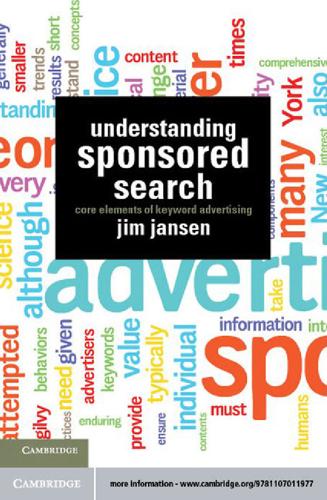
Understanding Sponsored Search: Core Elements of Keyword Advertising
by
Jim Jansen
Published 25 Jul 2011
Auction theory research has lead to the development of several auction formats or types of auction markets. The format that we are most interested in is the Generalized Second Price auction and its poster-child auction, the Vickrey auction, as well as the generalized form, the Vickrey-Clarke-Groves auction. Potpourri: Google AdWords was the first sponsored-search platform that utilized the format now known as Generalized Second Price auction. The Serious Game of Bidding 181 The Generalized Second Price auction quickly became the standard for keyword auctions, with an amazingly broad impact on the Web and e-commerce. Although Hal Varian, the first Google chief economist, is best known as the face of Google AdWords, the credit for developing the Google AdWords system goes to Salar Kamangar, the ninth employee at Google, and Eric Veach, another early Google employee and Distinguished Engineer.
…
Google’s first sponsored-search auction was in February 2002, adopting Overture’s pay-per-click revenue model, but they continued their sales-by-impression model in parallel [12] before finally dropping it altogether in favor of the pay-per-click model. Additionally, Google’s sponsored-search model was introduced with some significant changes relative to the Overture model. First, developers of Google’s AdWords platform changed the pricing scheme from a first-price auction to a more stable second-price auction. In a single-item second-price auction, the highest bidder wins but only pays the second-highest bid price plus some small delta, which is a fancy word for additional amount. (Note: We’ll discuss the significance of this in Chapter 8 where we cover bidding practices.) Second, Google also changed the standard allocation scheme.
…
. • Bidder A bids $1.00 • Bidder B bids $1.10 • Bidder C bids $1.20 In this scenario, C wins the bid but pays only $1.11, because in the sponsored-search auction, advertisers do not pay their actual bid; instead, they pay the second-highest bid plus a small delta (i.e., a small change, think of it as one cent). This is the basis for the Generalized Second Price auction, which is one of the sponsored search’s most famous auction implementations. Recall that the search engine is the auctioneer, and the advertisers are also paying the search engine, as the search engine is also the seller of the resource (i.e., keyphrases). So, why would a search engine use the Generalized Second Price approach? It would seem in the Generalized Second Price auction that the search engine is getting 188 Understanding Sponsored Search less revenue because it is not getting the best price per keyword.

Model Thinker: What You Need to Know to Make Data Work for You
by
Scott E. Page
Published 27 Nov 2018
When the price gets to $60, the second bidder exits. Therefore, the third bidder wins the auction and pays $60.4 In a second-price auction, each bidder submits a sealed bid. None of the other bidders see the amount. The object goes to the bidder who bids the largest amount. However, the bidder only pays an amount equal to the second-highest bid. The construction of the second-price auction makes telling the truth optimal. Imagine a bidder who values an object at $80 deciding how to bid in a second-price auction. We can assume that the other bidders have already submitted their bids. The bidder must consider three possible cases: the highest other bid could be less than $80, equal to $80, or more than $80.
…
In an ascending-bid auction, the strategy of staying in as long as the price is less than a bidder’s value requires a single step of reasoning: if the price is less than your value, buy it at this price. In the second-price auction, a bidder has to think through multiple contingencies to see that truthful revelation is optimal. Of course, once someone bids in several second-price auctions, she should learn that the optimal bid is to tell the truth. A last feature to consider is whether the auction encourages non-optimal behavior. In first- and second-price auctions, bidders submit their bids without knowing others’ bids. In an ascending-bid auction, bidders can see the price rise and are aware of who remains in the bidding.
…
Whether or not bidders change their values during the bidding process is a matter of conjecture. We need only recognize that it could happen. In first- and second-price auctions, bidders make a single bid, which allows no opportunity for emotional appeals during the auction. Finally, in the first-price auction and the ascending-bid auction, the price equals the highest bid. In the second-price auction, it equals the second-highest bid. This leaves the appearance that the seller could have received a higher price and, in part, explains why governments do not use second-price auctions. Imagine the headline if a government received three bids for oil rights, one at $6 million, one at $8 million, and one at $12 million: “Government Gets $12 Million Bid but Sells Land for $8 Million.”
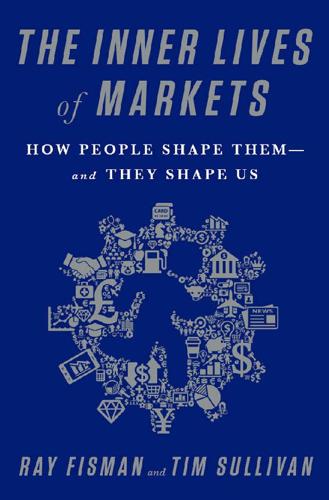
The Inner Lives of Markets: How People Shape Them—And They Shape Us
by
Tim Sullivan
Published 6 Jun 2016
You might have the impression that the seller makes out badly in a second-price auction. After all, in using a first-price rather than second-price auction for the sale of Dice-K’s contract, it looks like Boston’s loss is the Seibu Lion’s gain: an extra $20,111,111.11 to be exact. But this fails to account for the fact that all teams might have bid more aggressively if they’d known that they would be paying the second highest bid if they won, rather than their own. That is, the auction rules change the bids that come in, and one of the points of a second-price auction is that it makes for higher bidding. Besides, it was concerns about overpayment that led to the crisis in the posting system in the first place: if the auction system breaks down completely, it isn’t good for anyone.7 Johann Wolfgang von Goethe, Amateur Auction Theorist It turned out that stamp collectors weren’t even the first to beat economists to the Vickrey auction.
…
A classic result in auction theory, the Revenue Equivalence Theorem, shows that, with appropriate assumptions on buyer and seller attributes like risk preferences, first- and second-price auctions can be expected to generate the same revenues for the seller, on average. Essentially, bidders in a first-price auction will shave their bids by “just enough” so that on average the amount paid to the seller is about the same. Sometimes it’ll be higher under a second-price auction, sometimes lower, but over time it’ll even out such that the choice between the two is, in theory, irrelevant. 8. This is a major issue in the design of broadband auctions, which sell internet bandwidth to cable and internet companies.
…
Vickrey’s classic auction study similarly began with a precise explanation of what was wrong with the standard first-price sealed-bid auction that was standard practice in procurement auctions for everything from highways to school supplies, the same mechanism that was used to sell Matsuzaka’s contract. By the time he was done, he’d unwittingly reinvented the stamp collectors’ auction of choice and laid the foundations for the field of auction design in the process. Vickrey described what he thought was a better way: the second-price sealed-bid auction, which is now known simply as a Vickrey auction. Then he proved mathematically that it just might be the best of all possible auctions that one could devise. He changed the auction industry from one that relied on an ad hoc choice of format to one built on design and optimization—a microcosm of economists’ larger role in society.

Who Gets What — and Why: The New Economics of Matchmaking and Market Design
by
Alvin E. Roth
Published 1 Jun 2015
But if you raise your bid to above $120, you will win the auction and pay $120 (now the second-highest bid) for something that is worth only $100 to you. Bad move: you’ve converted a profit of zero into a loss of $20. So it’s safe to bid your true value in a second-price auction of this kind, since you can’t do better by bidding anything else. Notice that while a second-price auction makes it safe for bidders to bid the true value to them, it doesn’t necessarily impose a cost on the seller, even though the seller receives only the amount of the second-highest bid. That’s because in a first-price sealed bid auction, for example, it isn’t safe for bidders to bid their true value; they have to bid less than that if they are going to make any profit, since if they win the auction, they will have to pay the full amount of their bid.
…
Sometimes items are sold instead in “sealed bid” auctions: each bidder submits a bid without hearing the other bids, the bids are all opened at the same time, and the highest bidder wins, sometimes paying the amount of his bid and sometimes paying the amount of the second- highest bid. Paying the second-highest bid may sound odd, until you notice that in an ascending bid auction, the winning bidder pays the price at which the second-highest bidder dropped out. So in both an ascending bid auction and a second-price sealed bid auction, the highest bidder gets the object at the price just beyond what the second-highest bidder was willing to pay. Both of those auction formats make it easy to decide how much to bid, if you know how much the object is worth to you. That’s because if you think of the winning bidder’s profit as what the object is worth to him minus what he has to pay for it (and each losing bidder’s profit as zero), it’s perfectly safe for bidders to bid the object’s full true value to them in a sealed bid auction, or to stay in an ascending bid auction until the auctioneer reaches the full amount they are willing to pay.
…
That’s because if you think of the winning bidder’s profit as what the object is worth to him minus what he has to pay for it (and each losing bidder’s profit as zero), it’s perfectly safe for bidders to bid the object’s full true value to them in a sealed bid auction, or to stay in an ascending bid auction until the auctioneer reaches the full amount they are willing to pay. Win or lose, a bidder can’t make a higher profit by bidding something else. That isn’t obvious at all, but if you think about it carefully, you’ll see why it’s true. Consider the second-price sealed bid auction, in which the high bidder receives the object and pays the second-highest bid, while the other bidders pay nothing and receive nothing. By bidding less than the object’s true value, a bidder sometimes turns a profitable winning bid into a losing one, and by bidding more than the true value, he sometimes turns a losing bid into an unprofitable winning bid at which he pays more than the object was worth to him.

A Little History of Economics
by
Niall Kishtainy
Published 15 Jan 2017
He devised a type of auction in which bidders have every incentive to be truthful. In standard sealed-bid auctions the winning bidders pay an amount equal to their own bid, the highest bid. Instead of the ‘first-price’ sealed-bid auction, Vickrey proposed a ‘second-price’ auction in which the winning bidder is the highest bidder but pays an amount equal to the second-highest bid. Suppose that in a second-price house auction you bid £250,000, rather than your true valuation of £300,000. Shading your bid wouldn’t affect how much you’d pay for the house should you turn out to be the highest bidder because you’d only pay the second-highest bid.
…
If you bid £250,000 for a house that you value at £300,000 then you might win and make a £50,000 profit, but you might be outbid and end up with nothing. If you hate risk you’ll tend to shade less, perhaps bidding £290,000. In the first-price auction your aversion to risk makes you bid close to your true valuation, and that’s what you’ll pay if you win. In the second-price auction, you’d only have to pay the second-highest bid. In this case it’s possible that the seller would get more money in a first-price than a second-price auction. There are many different kinds of auctions in theory, but in the real world economists have to tailor their designs to the context. The British economist Paul Klemperer (b. 1956) led a team that designed Britain’s third-generation mobile phone licence auction held in 2000.
…
Shading your bid wouldn’t affect how much you’d pay for the house should you turn out to be the highest bidder because you’d only pay the second-highest bid. But in bidding £250,000 you’d lose the house if someone else bid over £250,000, so the best you can do is to bid your true valuation. Vickrey wasn’t the first to have the idea. In the eighteenth century, the German writer Goethe sold a publisher one of his poems using a second-price auction. Today, eBay auctions work roughly according to the second-price principle, although they’re not true Vickrey auctions. One complication is that participants’ bids are revealed as the clock ticks, which encourages tactics like waiting until the last moment to place bids. The catch with Vickrey’s auction is that the seller has to settle for an amount equal to the second highest rather than the highest bid.

The Upside of Irrationality: The Unexpected Benefits of Defying Logic at Work and at Home
by
Dan Ariely
Published 31 May 2010
You decide how much to bid on it and offer a decidedly high amount. Are you aware that you are overbidding and that other people will not see your creation as you do? Or do you also think that others share your affinity for your creation? To find out, we compared the results of two different bidding procedures called first-price and second-price auctions. Without going too much into the technical differences,* if you were bidding using a second-price bidding procedure, you should carefully consider only how much you value your little paper creature.* In contrast, if you were bidding using a first-price bidding procedure, you should take into consideration both your own love for the object and how much you think others will bid for it.
…
.* In contrast, if you were bidding using a first-price bidding procedure, you should take into consideration both your own love for the object and how much you think others will bid for it. Why do we need this complexity? Here is the logic: if the creators realized that they were uniquely overimpressed with their own frogs and cranes, they would bid more when using the second-price auction (when only their value matters) than when using the first-price auction (when they should also take into account the values of others). In contrast, if the creators did not realize that they were the only ones who overvalued their origami and they thought that others shared their perspective, they would bid a similarly high amount in both bidding procedures.
…
In contrast, if the creators did not realize that they were the only ones who overvalued their origami and they thought that others shared their perspective, they would bid a similarly high amount in both bidding procedures. So did the origami builders understand that others didn’t see their creations as they did? We found that creators bid the same amount when they considered only their own evaluation for the product (second-price auction) as when they also considered what noncreators would bid for it (first-price auction). The lack of difference between the two bidding approaches suggested not only that we overvalue our own creations but also that we are largely unaware of this tendency; we mistakenly think that others love our work as much as we do.
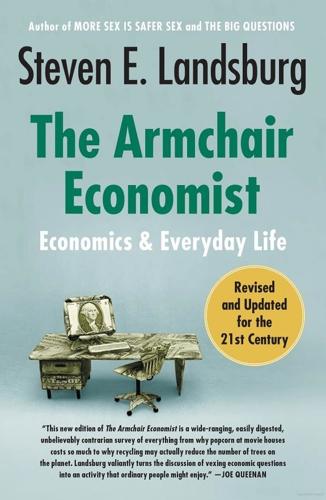
The Armchair Economist: Economics and Everyday Life
by
Steven E. Landsburg
Published 1 May 2012
Because bidders are unlikely to reveal their bidding strategies in advance of the auction, the seller can never know for certain on any given night whether an English auction is preferable to, say, a Dutch auction. Even to decide between a first-price and a second-price sealed bid auction can be difficult for the seller. On the one hand, in a first-price auction he collects the high bid, while in a second-price auction he collects only the amount of the second-highest bid. On the other hand, bidders generally submit higher bids in a second-price auction. They submit even higher bids in a third-price auction. Which is best for the seller? Again the answer depends on who shows up to bid, and what the bidders' strategies are.
…
There is the Dutch auction, where an auctioneer calls out a very high price and successively lowers it until he receives an offer to buy. There is the first-price sealed bid auction, where each buyer submits a bid in an envelope, all are opened simultaneously, and the high bidder gets the item for the amount of his bid. There is the second-price sealed bid auction, where the high bidder gets the item but pays only the amount of the second-highest bid. There are third-, fourth-, and fifth-price sealed bid auctions. And there are more exotic possibilities. In the Glum Losers auction, the high bidder gets the item for free and everybody else pays the amount of his own bid.
…
Under certain reasonable assumptions (about which I will soon say more), and as a matter of mathematical fact, all of the auction rules I've mentioned yield the same revenue to the seller on average over many auctions. If I regularly sell merchandise at English auctions, while you sell at Dutch auctions, your brother sells at first-price sealed bid auctions, your sister sells at second-price sealed bid auctions, and your crazy Uncle Fester sells at Glum Losers auctions, and if we all sell merchandise of comparable quality, then in the long run we must all do equally well. This result applies as well to a vast number of other auction rules—in fact, to any rule you can imagine that does not involve some entrance fee to the auction hall or its equivalent.
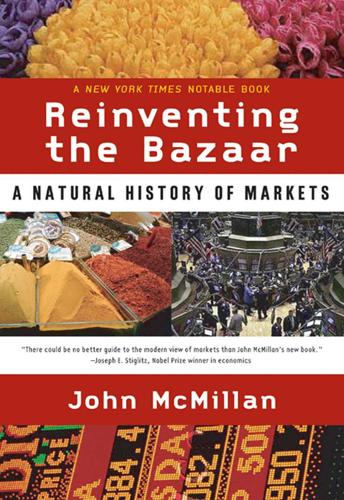
Reinventing the Bazaar: A Natural History of Markets
by
John McMillan
Published 1 Jan 2002
An alternative way of running the bidding is the Dutch auction, used to sell flowers at Aalsmeer, in which the price starts high and falls until a bidder claims the item. Another is the sealed-bid auction, in which there is a single round of sealed bids; the high bidder wins and pays his or her bid. Commercial real estate is sometimes sold this way. A variant is the second-price auction, in which there is a single round of bidding and the high bidder wins, but unlike first-price auctions, the price paid is the second-highest bid. Second-price auctions are used for selling stamps. eBay chose open auctions. Economic theory endorses this decision: the open auction yields, on average, a price that is closer to the item’s true value than do the other forms of auction.3 This is because bidders have more information in an open auction.
…
Journal of Political Economy 92, 991–1016. ————. 1996. “Report on the Design and Testing of an Applicant Proposing Matching Algorithm, and Comparison with the Existing NPRM Algorithm.” www.economics.harvard.edu/~aroth/phase1.html. Roth, Alvin E., and Ockenfels, Axel. 2000. “Last Minute Bidding and the Rules for Ending Second-Price Auctions.” Unpublished, Harvard University, Cambridge. Roth, Alvin E., and Peranson, Elliot. 1999. “A Redesign of the Matching Market for American Physicians: Some Engineering Aspects of Economic Design.” American Economic Review 89, 748–780. Roth, Alvin E., Prasnikar, Vesna, Okuno-Fujiwara, Masahiro, and Zamir, Shmuel. 1991.

The Irrational Bundle
by
Dan Ariely
Published 3 Apr 2013
You decide how much to bid on it and offer a decidedly high amount. Are you aware that you are overbidding and that other people will not see your creation as you do? Or do you also think that others share your affinity for your creation? To find out, we compared the results of two different bidding procedures called first-price and second-price auctions. Without going too much into the technical differences,* if you were bidding using a second-price bidding procedure, you should carefully consider only how much you value your little paper creature.* In contrast, if you were bidding using a first-price bidding procedure, you should take into consideration both your own love for the object and how much you think others will bid for it.
…
.* In contrast, if you were bidding using a first-price bidding procedure, you should take into consideration both your own love for the object and how much you think others will bid for it. Why do we need this complexity? Here is the logic: if the creators realized that they were uniquely overimpressed with their own frogs and cranes, they would bid more when using the second-price auction (when only their value matters) than when using the first-price auction (when they should also take into account the values of others). In contrast, if the creators did not realize that they were the only ones who overvalued their origami and they thought that others shared their perspective, they would bid a similarly high amount in both bidding procedures.
…
In contrast, if the creators did not realize that they were the only ones who overvalued their origami and they thought that others shared their perspective, they would bid a similarly high amount in both bidding procedures. So did the origami builders understand that others didn’t see their creations as they did? We found that creators bid the same amount when they considered only their own evaluation for the product (second-price auction) as when they also considered what noncreators would bid for it (first-price auction). The lack of difference between the two bidding approaches suggested not only that we overvalue our own creations but also that we are largely unaware of this tendency; we mistakenly think that others love our work as much as we do.

The Man From the Future: The Visionary Life of John Von Neumann
by
Ananyo Bhattacharya
Published 6 Oct 2021
The second-highest bidder secures the second-most prominent position on the results page – and pays the third-highest bid, and so on. Designing and perfecting these ‘generalized second price’ auctions brought the first wave of game theorists into tech firms. For a brief history and review of such auctions, see one of the most cited economics papers of this century: Benjamin Edelman, Michael Ostrovsky and Michael Schwarz ‘Internet Advertising and the Generalized Second-Price Auction: Selling Billions of Dollars Worth of Keywords’, American Economic Review, 97(1) (2007), pp. 242–59. 81. W. D. Hamilton, 1996, Narrow Roads of Gene Land, vol. 1: Evolution of Social Behaviour, Oxford University Press, Oxford. 82.
…
The same year the three laureates would receive their gold medals from the king of Sweden, the US government was preparing to auction bands of the radio spectrum to telecoms firms. Thousands of licences worth billions of dollars were at stake. Many past sell-offs had flopped.72 In New Zealand, a botched ‘second-price’ auction, in which the winner only pays the second-highest bid, resulted in a firm that bid NZ$7 million paying NZ$5,000; and a university student picking up a licence to run a television network for a small city for nothing – because no one else had bid. Under pressure to avoid such pitfalls, the Federal Communications Commission (FCC) asked for proposals and adopted a system designed by game theorists including Paul Milgrom and Robert Wilson.
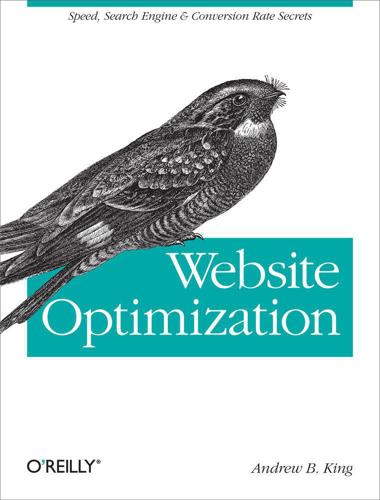
Website Optimization
by
Andrew B. King
Published 15 Mar 2008
Optimizing Bids PPC programs use an auction that is like a second-price sealed bidding system with private values. This means you do not know how much your competitors are bidding. Everyone has different bids for each keyword. Typically, people overbid in second-price auctions with private values. The larger the number of competing bidders and the more uncertain the value of what is being bid on, the more extreme the overbidding gets. A PPC auction is a little more complicated than a second-price auction because multiple positions are being bid on simultaneously and Quality Score factors affect rankings. The lesson from this is if you don't want to lose money, you need to figure out the value that keywords have for you.
…
If you'd rather be middle of the road, you should build up your account from a set of strong keywords and work from an initial budget calculation such as the one in "Differences in Minimum Bids and Quality Scoring," described earlier in this chapter. Using the numbers from "Closing the Loop," also earlier in this chapter, with a conversion rate of 6% and a value per conversion of $20, you will break even with a CPC of $1.20: ($20 / conversion * 6 conversions) / 100 clicks = $1.20 / click The dominant strategy in a second-price sealed auction is to set your maximum CPC to $1.20. However, in PPC, you are not bidding for one item. Your ad may show in a range of positions. Assuming that your conversion rates do not depend on position (a reasonable assumption), you will want to show your ad in lower positions if it brings roughly the same amount of traffic, because it will be cheaper.
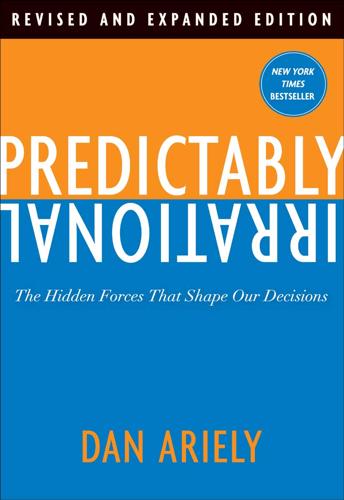
Predictably Irrational, Revised and Expanded Edition: The Hidden Forces That Shape Our Decisions
by
Dan Ariely
Published 19 Feb 2007
approach to dining with friends in, 248–50 with lines to get in, 36, 37 menu pricing of, 4 ordering in, 231–38; see also ordering food or drinks social norms of dating and, 75–76 retirement, saving for, xiii from perspective of standard economics vs. behavioral economics, 241 revenge, 307–9 as enforcement mechanism, 309 pleasure of, 307–8 rewards: delayed gratification and, 261–64 financial, job performance and, 320–21 reinforcement schedules and, 257–58 unpredictable, learned helplessness and, 312–16 see also bonuses robberies, 195 romantic relationships: options in, 142, 148, 150 separation of social and market norms and, 69, 75–76, 250 see also dating Roth, Al, xviii royal touch, 188 Rustichini, Aldo, 76–77 S safe sex, 100–102 and willingness to engage in unprotected sex when aroused, 89, 95, 96–97, 99, 107 salaries, 16–19, 88 of bankers, calculating right amount of, 319–24 of CEOs, 16–17, 18, 310 co-workers’ comparisons of, 16 excessive, erosion of public trust and, 310, 311 executive, public outcry over, 306, 310, 311, 319–20 happiness and, 17–18 and move from hourly rates to monthly pay, 80 performance-based, in education, 85 relinquishing dreams for increase in, 18–19 “save more tomorrow” mechanism and, 242 willingness to risk life and, 84 see also bonuses; compensation sale prices, 148–49 relativity and, 19–20 Sarbanes-Oxley Act of 2002, 204, 205–6 savings, 109–11 decline in rate of, 109–10 defeating procrastination in, 122–26 401(k)s and, xiii planning fallacy and, 303–4 for retirement, from perspective of standard economics vs. behavioral economics, 241 “save more tomorrow” mechanism and, 242 self-control credit card and, 123–26 Sawyer, Tom, 24–25, 39–40, 42–43 Schmalensee, Richard, 92 schools: soda machines at, 204 see also education second price auctions, 28n Securities and Exchange Commission (SEC), 205 self-control, 109–26, 255–65 credit cards and, 123–26 decline in savings rate and, 109–10 e-mail and, 255–59 effectiveness of external voice and, 116–17 patient compliance and, 260–64 procrastination of university students and, 111–16 self-destructive behaviors, 264–65 government regulation and, 118 self-herding, 37–38 self-reliance, 68 thinking about money and, 74–75 self-shame, debt blogging and, 122–23 Seligman, Martin, 312-13 sensei (martial arts master), offering pay to, 71–72 Seven Pounds, 255 sex: and likelihood of engaging in immoral behaviors, 94–95, 96, 97, 107 and preferences in “cold” vs. aroused state, 89, 94, 96, 97, 106 safe vs. unprotected, 89, 95, 96–97, 99, 100–102, 107 in social vs. market context, 68–69 as taboo subject for study, 92 sex education, 101 sexual arousal: decision making under, 89–102, 106–8 see also arousal Shakespeare, William, xxviii–xxix, 188, 232, 239–40 Shampanier, Kristina, 51, 339 Shin, Jiwoong, 142–43, 147, 339–40 Shin, Margaret, 169 shipping, FREE!
…
Look for someone whose sibling is married to a productivity-challenged individual. * Of course, physicians have other problems as well, including insurance forms, bureaucracy, and threats of lawsuits for malpractice. * The price the highest bidder paid for an item was based not on his own bid, but on that of the second highest bidder. This is called a second price auction. William Vickrey received the Nobel prize in economics for demonstrating that this type of auction creates the conditions where it is in people’s best interest to bid the maximum amount they are willing to pay for each item (this is also the general logic behind the auction system on eBay)
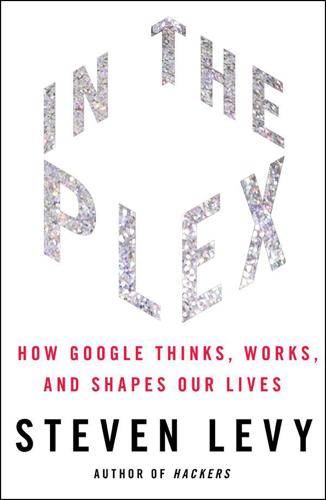
In the Plex: How Google Thinks, Works, and Shapes Our Lives
by
Steven Levy
Published 12 Apr 2011
Overture required its advertisers to pick specific keywords; Google would match an ad to many keywords, some of them with subtle connections discovered by analysis of the behavior of its millions of users. Overture concentrated on high-value accounts that it sold by hand. Google built a self-service system that allowed it to accommodate hundreds of thousands of advertisers. Overture did implement some of Google’s innovations, such as the second-price auction. But by then AdWords had left Overture and Yahoo in the dust. (Bill Gross would later shrug off the fact that his ideas involving pay per click and ad auctions had made billionaires at Google but not at Idealab. “I feel we won,” he says. “There was the satisfaction of breaking the code. We originally invested $200,000 in GoTo, and when we sold Overture, we made $200 million.
…
AdWords Select rolled out in February 2002. The AOL deal went into effect in May. Suddenly, Google’s financial crisis was over. Now Google had a cash cow that would fund the next decade’s worth of projects, from brilliant to lunatic. In 2007, writing about the “spectacular commercial success” of the second-price auction model, economists at Stanford, Harvard, and the University of California at Berkeley described it as “the dominant transaction mechanism in a large and rapidly growing industry.” Before AdWords Select and the AOL deal, Eric Schmidt often passed by Sheryl Sandberg’s cubicle and asked her how many advertisers Google had.
…
Anderson (who is my editor at Wired) later wrote a best-selling book with the same title. 85 Yossi Vardi “Interview with Sergey Brin,” Haaretz.com, June 2, 2008. 90 So Veach devised I described the workings of Google’s ad model in “Secret of Googlenomics,” Wired, April 2009. 94 “That’s really satisfying” Brin told me this while I was researching “The World According to Google,” Newsweek, December 16, 2002. 95 Overture’s failures Flake presented his slide show, “How Google Won the Search Engine Wars,” at the Marketing 3.0 conference in New York City, April 25, 2009. 99 “the dominant transaction mechanism” Benjamin Edelman, Michael Ostrovsky, and Michael Schwarz, “Internet Advertising and the Generalized Second Price Auction: Selling Billions of Dollars Worth of Keywords,” American Economic Review, March 2007. 101 “many synergies” Amy Harmon, “Google Deal Ties Company to Weblogs,” The New York Times, February 17, 2003. 102 “The potential exists” Danny Sullivan, “Google Throws Hat into the Contextual Advertising Ring,” Search Engine Watch, March 4, 2003. 102 “We could change the economics” Wojcicki called me at Newsweek in 2003 to explain the product. 105 In 2008, a story Nicholas Carlson, “Google’s Worst Ads, Ever,” Business Insider, August 20, 2009. 106 In May 2010 Neal Mohan, “The AdSense Revenue Share,” Google Inside AdSense blog, May 24, 1010.
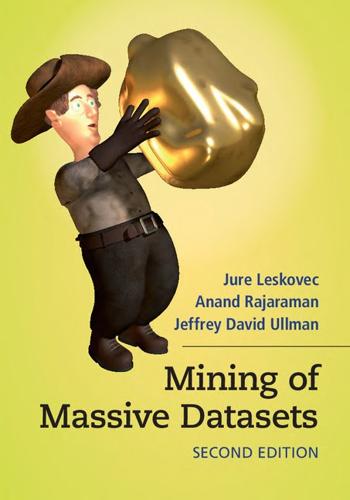
Mining of Massive Datasets
by
Jure Leskovec
,
Anand Rajaraman
and
Jeffrey David Ullman
Published 13 Nov 2014
Charging Advertisers for Clicks: In our simplified model, when a user clicks on an advertiser’s ad, the advertiser is charged the amount they bid. This policy is known as a first-price auction. In reality, search engines use a more complicated system known as a second-price auction, where each advertiser pays approximately the bid of the advertiser who placed immediately behind them in the auction. For example, the first-place advertiser for a search might pay the bid of the advertiser in second place, plus one cent. It has been shown that second-price auctions are less susceptible to being gamed by advertisers than first-price auctions and lead to higher revenues for the search engine. 8.4.5A Lower Bound on Competitive Ratio for Balance In this section we shall prove that in the simple case of the Balance Algorithm that we are considering, the competitive ratio is 3/4.
…
., 67 S-curve, 84, 93 Saberi, A., 291 Salihoglu, S., 66 Sample, 215, 218, 221, 223, 242, 249, 253 Sampling, 127, 141 Savasere, A., 226 SCC, see Strongly connected component Schapire, R.E., 458 Schema, 30 Schutze, H., 18 Score, 105 Search ad, 268 Search engine, 166, 181 Search query, 125, 155, 176, 268, 285 Second-price auction, 279 Secondary storage, see Disk Selection, 31, 33 Sensor, 124 Sentiment analysis, 422 Set, 76, 112, see also Itemset Set difference, see Difference Shankar, S., 67 Shawe-Taylor, J., 458 Shi, J., 383 Shim, K., 266 Shingle, 72, 85, 109 Shivakumar, N., 226 Shopping cart, 193 Shortest paths, 42 Siddharth, J., 122 Signature, 75, 78, 85 Signature matrix, 78, 83 Silberschatz, A., 153 Silberstein, A., 67 Similarity, 4, 15, 69, 191, 299, 306 Similarity join, 52, 58 Simrank, 357 Singleton, R.C., 153 Singular value, 397, 401, 402 Singular-value decomposition, 312, 384, 397, 406 Six degrees of separation, 369 Sketch, 100 Skew, 26 Sliding window, 126, 142, 148, 257 Smart transitive closure, 372 Smith, B., 324 SNAP, 382 Social Graph, 326 Social network, 16, 325, 326, 384 SON Algorithm, 217 Source, 367 Space, 87, 228 Spam, see also Term spam, see also Link spam, 328, 421 Spam farm, 178, 180 Spam mass, 180, 181 Sparse matrix, 28, 76, 77, 168, 293 Spectral partitioning, 343 Spider trap, 161, 164, 184 Splitting clusters, 255 SQL, 19, 30, 66 Squares, 366 Srikant, R., 226 Srivastava, U., 67 Standard deviation, 245, 247 Standing query, 125 Stanford Network Analysis Platform, see SNAP Star join, 50 Stata, R., 18, 190 Statistical model, 1 Status, 287 Steinbach, M., 18 Stochastic gradient descent, 320, 445 Stochastic matrix, 158, 385 Stop clustering, 234, 238, 240 Stop words, 7, 74, 110, 194, 298 Stream, see Data stream Strength of membership, 355 String, 112 Striping, 29, 168, 170 Strong edge, 328 Strongly connected component, 159, 374 Strongly connected graph, 158, 368 Substochastic matrix, 161 Suffix length, 116 Summarization, 3 Summation, 147 Sun, J., 414 Supercomputer, 19 Superimposed code, see Bloom filter, 152 Supermarket, 193, 214 Superstep, 43 Supervised learning, 415, 417 Support, 192, 216, 218, 221 Support vector, 437 Support-vector machine, 17, 415, 419, 436, 455 Supporting page, 178 Suri, S., 383 Surprise number, 137 SVD, see Singular-value decomposition SVM, see Support-vector machine Swami, A., 226 Symmetric matrix, 346, 384 Szegedy, M., 152 Tag, 298, 329 Tail, 372 Tail length, 135, 376 Tan, P.

Culture and Prosperity: The Truth About Markets - Why Some Nations Are Rich but Most Remain Poor
by
John Kay
Published 24 May 2004
If the highest outside bid is $110, you won't get the object, but you wouldn't have wanted to pay $110 for it anyway. A little time with pencil and paper will show that you can never lose by bidding your true valuation, but you { 102} John Kay might lose out if you enter a false value. Alone among bidding procedures, this "second-price auction" has the property of incentive compatibility: there is no benefit from strategic behavior. The mechanism sounds arcane and theoretical. It was proposed by an American economist, William Vickrey,n who received the Nobel Prize in 1996 for his analysis of this and similar problems. 18 But the Vickrey scheme is, in essence, the allocation mechanism that was used to decide what should be done with the Portrait ofDr.
…
., 116 Rousseau, Jean-Jacques, 242,247,253,290 Roux,Paul,85-86,89,90, 137,180,293 rule oflaw, 13, 75, 254, 352 rules, 73-82 Russia debt default (1998), 237 privatization in, 11, 13, 128, 288, 295, 306-7,319,344,355 See also Soviet Union Sachs, Jeffrey, 335 Samuelson, Paul, 179,210,324,330,335,359 San Remo flower market, 14, 146-48, 149, 151-52 Say,Jean-Baptiste, 174, 175, 179 Scherer, Mike, 334 Scholes, Myron, 159, 160-61, 237, 359 Scottish Enlightenment, 83, 126 "second-price auction," 102, 103 securities markets, 91, 92, 148 bonds, 50, 167-69 derivatives, 160-61, 237 and efficient market hypothesis, 236 "equity premium," 235 inception of, 55 investment strategy, 300 knowledge transmission, 270-71 speculation, 150, 151,341 traders' compensation, 321 valuation, 170-71 See also risk; stock markets self-interest, 11, 12-13, 16, 17, 20, 78, 127, 314,327,340 adaptive, 217, 252, 256, 343 American business model, 21, 62,313, 314-18,343-44 and cooperation, 247-48,250,253, 255-56,320 in politics, 12, 250-51 and redistributive market liberalism, 314-15 and Smith (Adam), 197-98 values of, 315-18,342,347 self-regarding materialism, 198,207,217, 315-18 expectation/achievement gap, 286,287 nonmaterialist motives vs., 320, 340 public goods vs., 248 rationality as, 210, 212, 219, 347 self-perpetuating, 216 social norms vs., 255 self-regulation, 349 Sen, Amartya, 327, 359 settlements.

I'm Feeling Lucky: The Confessions of Google Employee Number 59
by
Douglas Edwards
Published 11 Jul 2011
He envisioned an eBay-type auction where the advertiser would pay the minimum amount necessary to win a position in the rankings. Eric had never heard of William Vickrey, the Nobel laureate who had created a "second-price auction" model; he worked out the idea himself. It just made sense to him that instead of charging as much as an advertiser was willing to pay, we should automatically lower the cost to the minimum amount required. Then advertisers would have no incentive to lower their bids, but they would have an incentive to raise them when the bids below theirs increased. At first, Salar resisted the idea of a second-price auction, because it would confuse advertisers. They would have to trust us to lower their bids, and Salar wasn't sure they would be willing to do that.
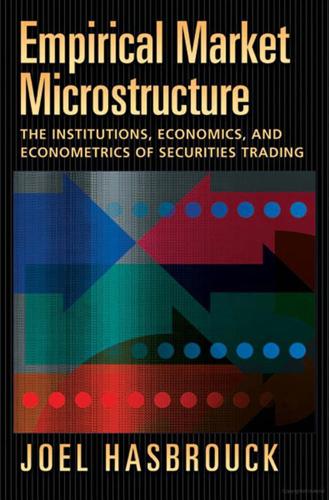
Empirical Market Microstructure: The Institutions, Economics and Econometrics of Securities Trading
by
Joel Hasbrouck
Published 4 Jan 2007
., 1996, Stochastic Processes (John Wiley, New York). Roth, Alvin E., 1995, Bargaining experiments, in John H. Kagel, and Alvin E. Roth, eds., The Handbook of Experimental Economics (Princeton University Press, Princeton, NJ). Roth, Alvin E., and Axel Ockenfels, 2002, Last-minute bidding and the rules for ending second-price auctions: Evidence from eBay and Amazon auctions on the internet, American Economic Review 92, 1093–103. Rubinstein, Ariel, 1982, Perfect equilibrium in a bargaining model, Econometrica 50, 97–110. Rust, John, John H. Miller, and Richard Palmer, 1993. Behavior of trading automata in a computerized double auction market, in Daniel Friedman, and John Rust, eds., The Double Auction Market Institutions, Theories and Evidence, Proceedings Volume XIV, Santa Fe Institute (Addison-Wesley, Reading, MA).
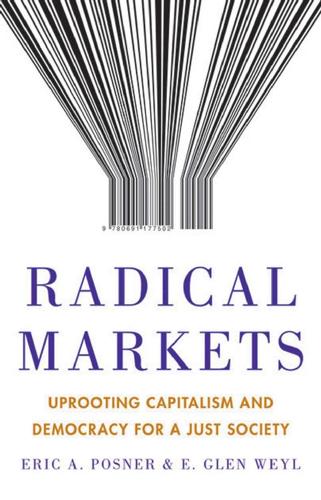
Radical Markets: Uprooting Capitalism and Democracy for a Just Society
by
Eric Posner
and
E. Weyl
Published 14 May 2018
While they acknowledge that holdout problems, and related problems of strategic behavior, can interfere with the transfer of property, they largely consider these problems as confined to cases where the use of property affects many people, as in the case of factory pollution. 29. See Benjamin Edelman, Michael Ostrovsky, & Michael Schwarz, Internet Advertising and the Generalized Second-Price Auction: Selling Billions of Dollars’ Worth of Keywords, 97 American Economic Review 242 (2007); Hal R. Varian, Position Auctions, 25 International Journal of Industrial Organization 1163 (2007). 30. R. H. Coase, The Federal Communications Commission, 2 Journal of Law and Economics 1 (1959); Thomas W.

Chaos Monkeys: Obscene Fortune and Random Failure in Silicon Valley
by
Antonio Garcia Martinez
Published 27 Jun 2016
In many ways, FBX is an SSP, except that unlike most SSPs, which try to sign as many publishers as possible, this one has only one big client: Facebook itself. * That didn’t mean FBX’s marginal contribution to FB revenue was as dramatic as the difference in bid. Like most online ad auctions, Facebook ran a “second price” auction. The economic specifics are PhD level, but essentially it meant you paid the amount of the next-highest bid, rather than what you bid. If one did the math, it meant a much better price-discovery mechanism overall. To truly increase total revenue, you needed a density of bids at the “clearing price” the ad impression had sold for, pushing the aggregate prices paid upward.

A Beautiful Mind
by
Sylvia Nasar
Published 11 Jun 1998
As Congress and the FCC inched closer to the notion of auctioning off spectrum rights, Australia and New Zealand both conducted spectrum auctions.19 That they proved to be costly flops and political disasters illustrated that the devil really was in the details. In New Zealand, the government ran a so-called second price auction, and newspapers were full of stories about winners who paid far below their bids. In one case, the high bid was NZ$7 million, the second bid NZ$5,000, and the winner paid the lower price. In another, an Otago University student bid NZ$1 for a television license in a small city. Nobody else bid, so he got it for one dollar.

Artificial Intelligence: A Modern Approach
by
Stuart Russell
and
Peter Norvig
Published 14 Jul 2019
Thus, your bid depends on your estimation of the other agents’ bids, requiring you to do more work. Also, note that the agent with the highest vi, might not win the auction. This is offset by the fact that the auction is more competitive, reducing the bias toward an advantaged bidder. A small change in the mechanism for sealed-bid auctions leads to the sealed-bid second-price auction, also known as a Vickrey auction.5 In such auctions, the winner pays the price of the second-highest bid, bo, rather than paying his own bid. This simple modification completely eliminates the complex deliberations required for standard (or first-price) sealed-bid auctions, because the dominant strategy is now simply to bid vi; the mechanism is truth-revealing.
…
This is actually a very general result: the revenue equivalence theorem states that, with a few minor caveats, any auction mechanism in which bidders have values vi known only to themselves (but know the probability distribution from which those values are sampled), will yield the same expected revenue. This principle means that the various mechanisms are not competing on the basis of revenue generation, but rather on other qualities. Although the second-price auction is truth-revealing, it turns out that auctioning n goods with an n + 1 price auction is not truth-revealing. Many Internet search engines use a mechanism where they auction n slots for ads on a page. The highest bidder wins the top spot, the second highest gets the second spot, and so on. Each winner pays the price bid by the next-lower bidder, with the understanding that payment is made only if the searcher actually clicks on the ad.

Algorithms to Live By: The Computer Science of Human Decisions
by
Brian Christian
and
Tom Griffiths
Published 4 Apr 2016
This is the mechanism designer’s holy grail. You do not need to strategize or recurse. Now, it seems like the Vickrey auction would cost the seller some money compared to the first-price auction, but this isn’t necessarily true. In a first-price auction, every bidder is shading their bid down to avoid overpaying; in the second-price Vickrey auction, there’s no need to—in a sense, the auction itself is optimally shading their bid for them. In fact, a game-theoretic principle called “revenue equivalence” establishes that over time, the average expected sale price in a first-price auction will converge to precisely the same as in a Vickrey auction.

The Undercover Economist: Exposing Why the Rich Are Rich, the Poor Are Poor, and Why You Can Never Buy a Decent Used Car
by
Tim Harford
Published 15 Mar 2006
The auctions were held without making sure that there was any interest from bidders, without minimum prices, and using a theoretical curiosity called a “Vickrey auction,” which led to considerable embarrassment. (The auction was named after its inventor, Nobel laureate William Vickrey, who made major early advances in applying game theory to auctions.) The Vickrey auction is a second-price sealed-bid auction. The “sealed bid” means that each bidder writes down a single bid and seals it in an envelope. When the envelopes are opened, the highest bidder wins. “Second-price” is the curious rule that the winner pays not his bid but that of the second-highest bidder. The elegant reasoning behind this auction is that no bidder ever has an incentive to shave his bid in an effort to make more profit; making a lower bid affects his chance of winning but not the price.